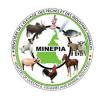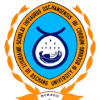Immuno-virological response and associated factors amongst HIV-1 vertically infected adolescents in Yaoundé-Cameroon.
| Title | Immuno-virological response and associated factors amongst HIV-1 vertically infected adolescents in Yaoundé-Cameroon. |
| Publication Type | Journal Article |
| Year of Publication | 2017 |
| Authors | Fokam J, Billong SClotaire, Jogue F, Ndiang SMoyo Tetan, Motaze ACarole Nga, Paul KNdombo, Nlend AEsther Njo |
| Journal | PLoS One |
| Volume | 12 |
| Issue | 11 |
| Pagination | e0187566 |
| Date Published | 2017 |
| ISSN | 1932-6203 |
| Keywords | Adolescent, Anti-HIV Agents, Cameroon, Cross-Sectional Studies, Female, HIV Infections, HIV-1, Humans, Infectious Disease Transmission, Vertical, Male, Viral Load |
| Abstract | INTRODUCTION: Limited studies have reported the outcomes of lifelong antiretroviral therapy (ART) amongst adolescents living with HIV (ALWHIV) in resource-limited settings (RLS), thus classifying this population as underserved. We therefore aimed to ascertain the immunological and virological responses, and associated factors amongst Cameroonian ALWHIV. METHOD: A cross-sectional and observational study was conducted from January through May 2016 at the National Social Insurance Fund Health Centre in Yaoundé-Cameroon. Immunological and virological responses were evaluated using CD4 cell count and viral load respectively, with viral suppression (VS) defined as <50 copies/ml. Adherence was evaluated using self-reported missing doses during the past 14 days. Data were analyzed using R v.3.3.0, with p<0.05 considered statistically significant. RESULTS: Of the 145 ALWHIV on ART enrolled in the study, 52% were female, median age [interquartile (IQR)] was 13 [11-16] years, median [IQR] time-on-ART was 7 [5-10] years, 48% were orphans, 92% were on first-line ART and 36% were adherent to ART. Following ART response, 79% (114/145) had CD4 ≥500/mm3, 71.0% (103/145) were on VS of whom 52.4% (76/145) had a sustained VS. Duration of ART was associated with immune restoration (Odd Ratio 3.73 [1.26-12.21]) but not with virological response. Risks of poor adherence were greater in orphans of both parents (p = 0.078). CONCLUSION: In this urban setting of Cameroon, ALWHIV receiving ART show favorable immunological and virological response in a medium run. For long-term ART success, implementing a close monitoring of adherence and risks of viral rebound would be highly relevant, especially for orphans of both parents. |
| DOI | 10.1371/journal.pone.0187566 |
| Alternate Journal | PLoS ONE |
| PubMed ID | 29112991 |
| PubMed Central ID | PMC5675438 |











